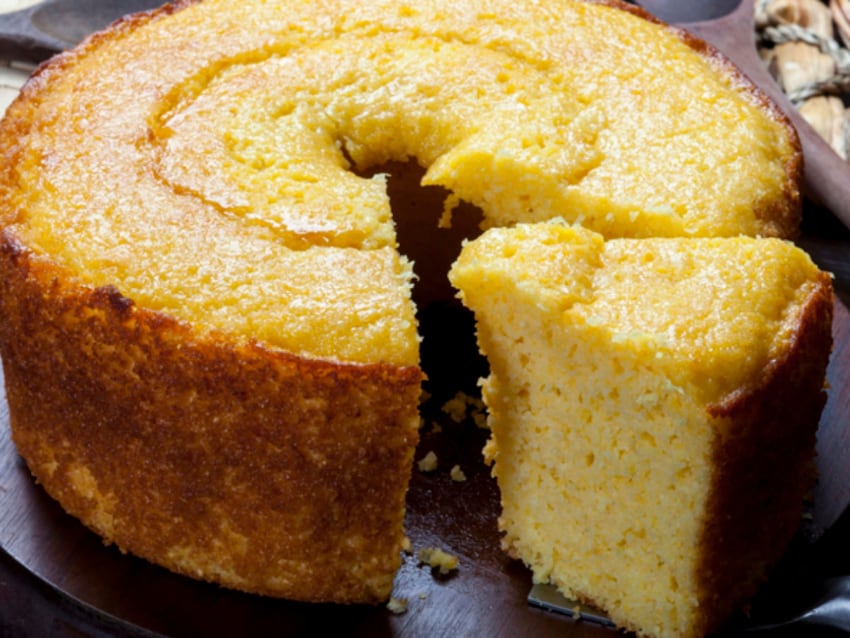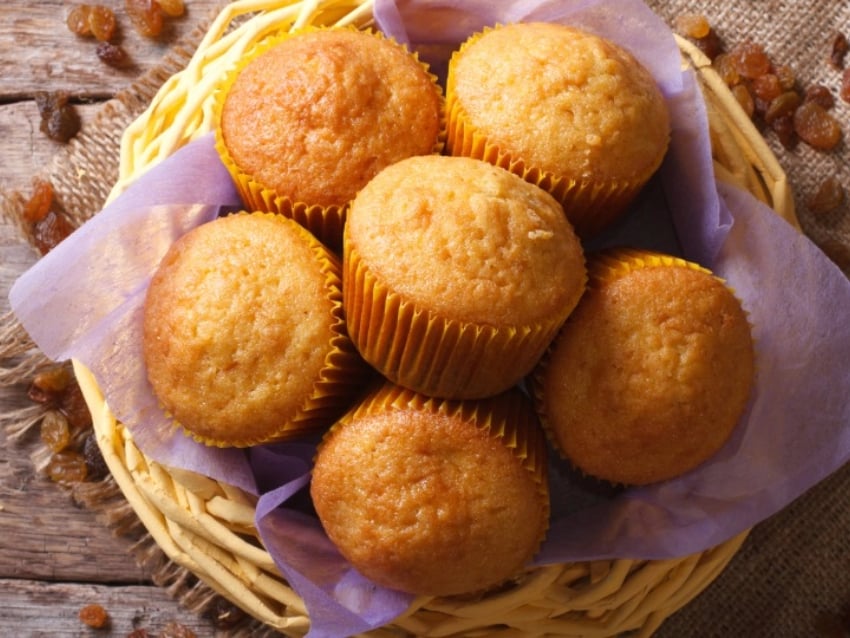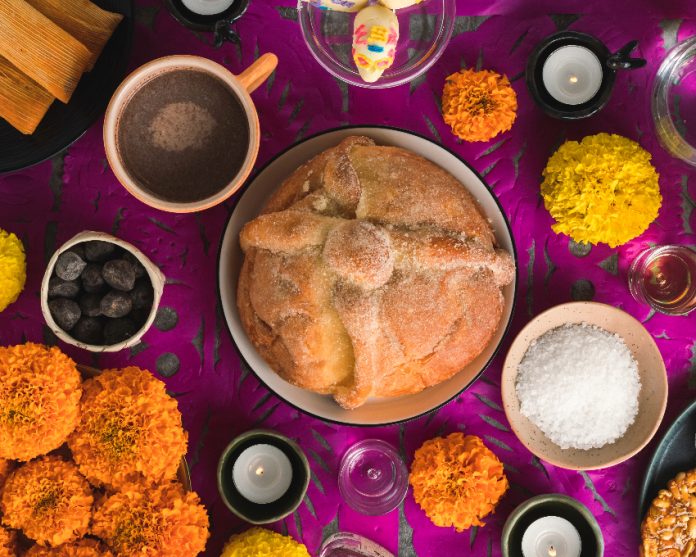It’s that time of year in Mexico when markets, tiendas and pastelerías are filled with “pan de muerto” (“bread of the dead”). Specially baked for Día de los Muertos on Nov. 1, the shape of this traditional “pan dulce” or sweet bread, represents the bodies of the departed, with “bones” laid atop small round buns. Though customarily placed on altars and shared with friends and family on the days surrounding Day of the Dead, pan de muerto is available in the weeks before the actual holiday.
To understand how the elegant, sugary pastries known as pan dulce became such an integral part of Mexican cuisine and culture, we need to look at a little history.

In the early 1500s, Roman Catholic monks brought wheat seeds with them from Spain in order to make communion wafers and other unleavened sacramental breads. (That’s why sheaves of wheat are still used in church decorations and celebrations in some rural areas.)
The seeds also came with the conquistadores; the earliest record of wheat in New Spain was in 1523, in the area now known as Mexico City. Today, those ancient wheat strains are valued for their genetic heritage; wheat historians and pathologists have tracked down hundreds of varieties throughout Mexico, spread by, for example, Franciscan friars in Michoacán and Dominican monks in Oaxaca.
Because these old religious missions were carried out in isolation, the wheat varieties found have never been mixed with more modern strains and have retained their original traits – including natural disease and pest resistance. Jump to the present day and northern Mexico is the country’s largest producer of wheat – specifically durum wheat, used primarily in making pasta and couscous. However, most of the Mexican crop is, sadly, sold as animal feed due to a lack of demand.
From this introduction, it was a small and easy step for local people to embrace the new grain and incorporate it into their diet, both for its apparently sacred nature but also for its versatility and flavor. Tortillas made from wheat flour were a logical next step from the more familiar corn flour – but pan dulce?

Again, some history: Food historians trace this culinary innovation to the mid-1800s when the French occupied Mexico. True to form, the gastronomic landscape was one of the many changes brought by this occupation.
Beginning in 1876 and continuing through the controversial 30-year reign of president/dictator Porfirio Diaz – a time called “the Porfiriato” – war against the French occupation raged on and off, with Diaz at the head. Finally, after being forced to resign from office in disgrace, he fled to exile in Spain and later settled in Paris, where he died and was buried.
Despite so many political differences and years of war with France, Porfirio was a dedicated Francophile who loved – you guessed it! – elegant French pastries. Thus, pan dulce was incorporated into the cuisine and palate of the Mexican people.
Since then, creative bakers across Mexico have come up with innumerable shapes, flavors and names for these sweet, pretty breads, traditionally enjoyed in the late afternoon with hot chocolate or coffee. It’s estimated that Mexico is home to many hundreds of (some say 2,000) kinds of pan dulce. Sprinkles and icings in a rainbow of colors; unusual intricate shapes; fruit fillings; flaky, airy, dense or fluffy doughs – each is different and worth trying.

Where to find pan dulce? The better question might be, where can’t you find pan dulce?!
Restaurants offer trays of sweet pastries with breakfast, and grocery stores offer shelves and shelves of them. And while those are viable places to buy pan dulce, I encourage you to make the effort to find these pastries as fresh-baked as possible.
Because they’re baked without any preservatives, their shelf-life is short. (Unless they’re packaged, which doesn’t count as the real thing in my book and shouldn’t count in yours either.)
Often, you can find bakers selling just-baked, still-warm pan dulce from the back of their car, outside a government building, or in a busy section of town at the start or end of the workday. In small towns and close-knit neighborhoods, home bakers can be found peddling baked goods on a bike at the same times of day. Or, go to a local bakery early in the morning or in the late afternoon when the pan dulce is fresh and just out of the oven. Once you’ve tried a fresh-baked, feathery-soft conchita, you’ll understand what I mean.
Bearing in mind that this list is by no means complete, what follows is a selection of the most common pan dulce. Some are universally found throughout the country – such as “conchas” and “niños envueltos” – although size and shape may differ slightly; others are regional specialties, beloved in certain areas and unknown elsewhere. Each has its own characteristics, texture and specific ingredients.
“Conchita/Concha”: Fluffy pastry pillows topped with a thick striped crust of sugar and cinnamon to look like a concha (shell). Sometimes colored pink or blue.
“Ciudadela”: Crispy sweet pastry drizzled with sugary syrup in various shapes, including Napoleons, shaped like the emperor’s hat.
“Mantecada”: A rich yeasted vanilla cupcake, traditionally baked in red cupcake paper.
“Elote”: A cookie made with corn flour, baked in the shape of an ear of corn. Not the same as…
“Pan de Elote”: Mexican-style cornbread, moister and more pudding-like than we’re used to.
“Polvorón”: Round or triangular vanilla sugar cookies are traditionally served at weddings (these are the traditional Mexican wedding cookies). Often colored in pastel or a rainbow of colors. Crunchy on the outside, soft and sandy on the inside.
“Niño envuelto”: Jam-filled sponge cake, like a jelly roll.
“Novia”: Domed, rolled cinnamon sugar pastry.
“Cañas”: Log-like, fruit-filled rolled pastry.
“Coliflor”: Vanilla cupcake with a “bumpy” top (like the vegetable cauliflower).
“Picón”: Round cake with a bubbly mass of melted sugar on top.
“Empanadas”: Small baked turnovers filled with “cajeta” (goat milk caramel), pineapple, guayaba or other fruit filling.
“Ojos de Buey”: Bright red balls of vanilla cake covered with shredded coconut.
“Churros”: Though not technically pan dulce, churros are a basic choux pastry dough squeezed through an extruder, deep-fried and rolled in cinnamon sugar. Sometimes they are filled with chocolate or cajeta. Originally from Spain.
Janet Blaser is the author of the best-selling book, Why We Left: An Anthology of American Women Expats, featured on CNBC and MarketWatch. She has lived in Mexico since 2006. You can find her on Facebook.
